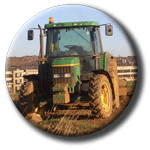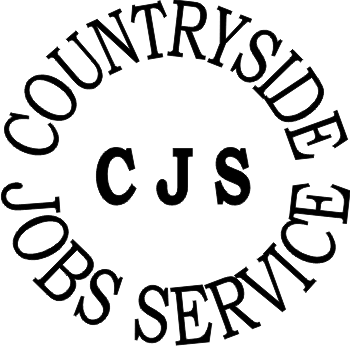Naturenet: Ploughing, cropping and rights of way
Ploughing, cropping
and rights of way
M
 any public rights of way cross working arable farmland. This means that the
farmer will need to plant and harvest the crop, often from the very same land
the right of way passes over. This can cause conflict, as ploughing up a right
of way can make the surface much harder to use, and of course the crop itself
can present a considerable obstacle. If you entered a field of maize along
a right of way which had not been cleared, for example, it might be impossible
to even see where to go, let alone force your way through the entire crop.
any public rights of way cross working arable farmland. This means that the
farmer will need to plant and harvest the crop, often from the very same land
the right of way passes over. This can cause conflict, as ploughing up a right
of way can make the surface much harder to use, and of course the crop itself
can present a considerable obstacle. If you entered a field of maize along
a right of way which had not been cleared, for example, it might be impossible
to even see where to go, let alone force your way through the entire crop.
Most farmers are sensible about this and respect the rights of way across
the land they work. A common-sense approach and the farmer's local knowledge
mean that in most cases visitors using the rights of way are not inconvenienced
by the process of farming - nor is the farmer inconvenienced by visitors causing
damage unwittingly. However, a sizeable minority of landowners and farmers
do not always take this approach, and there are some legal provisions to try
to resolve this conflict.
A landowner must not plough
or disturb the surface of:
- Cross-field footpaths and bridleways that can be conveniently avoided.
- Footpaths or bridleways at the edge of a field.
- Any other rights of way.
A landowner may plough or otherwise disturb a ROW if it is not convenient
to avoid it. But if they do so:
- The surface must be made good to at least the minimum
width so that it
is reasonably convenient to use;
- The line must be apparent on the ground to at least the minimum width to
anyone using it;
- The reinstatement must be done within 14 days of the first disturbance
of that crop; and
- Within 24 hours of any second or subsequent disturbance unless a longer
period has been agreed in advance in writing with the Highway Authority.
A landowner may also disturb a ROW during other operations such as excavation
or engineering, but in this case they must have written permission from the
Highway Authority. If the disturbance is serious the Authority may insist upon
a diversion order, which is usually made at the expense of the landowner.
Crops (except grass) must not overhang the minimum
width of a right of way
so as to inconvenience those using the highway, or to obscure the line of
the right of way to anyone using it.
A footpath or other right of way, or a part of it, may have its width defined
in the documentation associated with the Definitive Map. Such documentation
is held by the Highway Authority and is publicly available. Some rights of
way are defined as remarkably wide strips - as much as 30m. However, the
majority of paths do not have a width defined. In this case the following
general widths apply only in the case of ploughing and
reinstatement (this
does not mean that all paths must be this wide everywhere else):
- For a footpath, 1m across open fields and 1.5m at a field edge.
- For a bridleway, 2m across open fields and 3m on a field edge.
- For all other rights of way 3m across open fields and 5m at the field edge.

 any public rights of way cross working arable farmland. This means that the
farmer will need to plant and harvest the crop, often from the very same land
the right of way passes over. This can cause conflict, as ploughing up a right
of way can make the surface much harder to use, and of course the crop itself
can present a considerable obstacle. If you entered a field of maize along
a right of way which had not been cleared, for example, it might be impossible
to even see where to go, let alone force your way through the entire crop.
any public rights of way cross working arable farmland. This means that the
farmer will need to plant and harvest the crop, often from the very same land
the right of way passes over. This can cause conflict, as ploughing up a right
of way can make the surface much harder to use, and of course the crop itself
can present a considerable obstacle. If you entered a field of maize along
a right of way which had not been cleared, for example, it might be impossible
to even see where to go, let alone force your way through the entire crop.